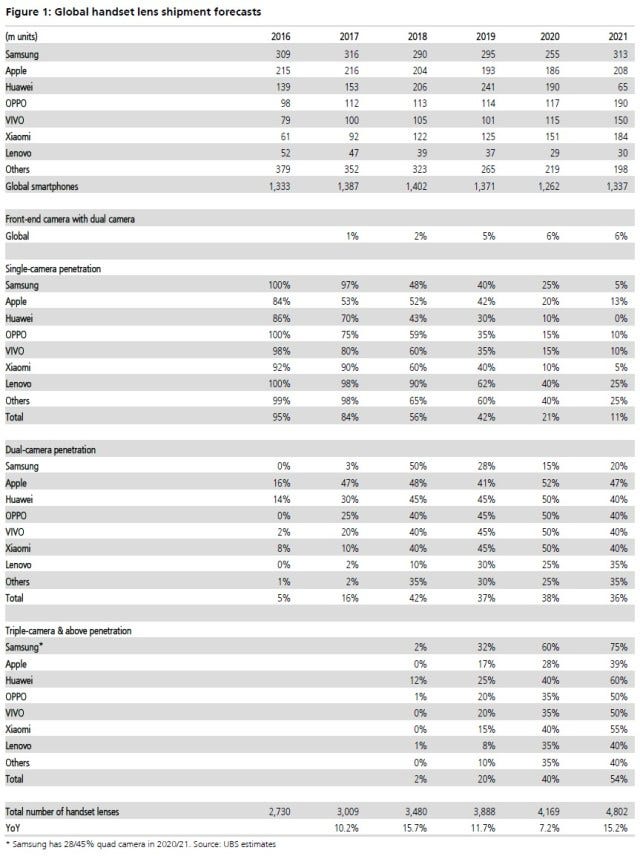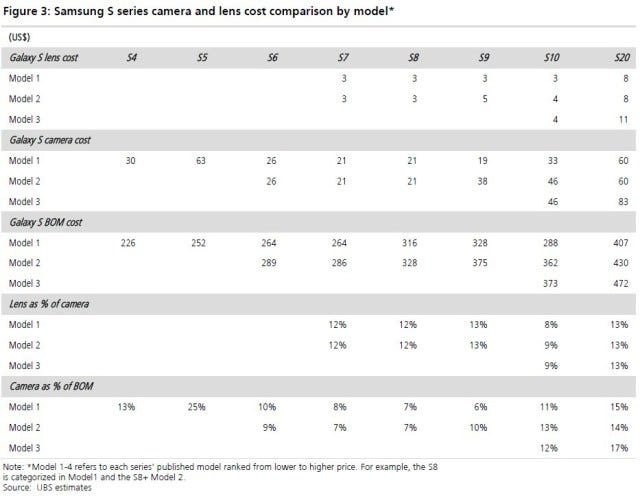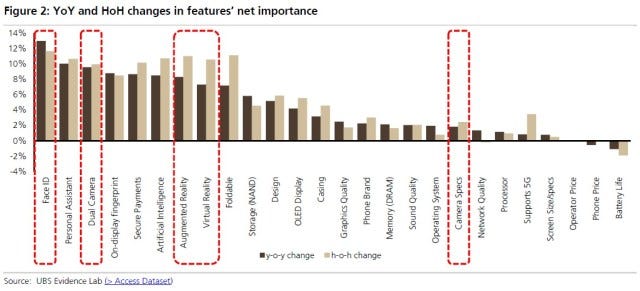LG Innotek, a subsidiary of LG Group, is planning to invest KRW547.8B (~USD0.5B), to increase the output of Apple iPhone camera modules. It will use the funds to expand the scale of the factory and use CMOS image sensors from Sony and Samsung to manufacture camera modules. The final product will be shipped to the Foxconn factory in Taiwan, China, to assemble the iPhone. (GizChina, Asia Nikkei)
UBS expects the camera feature in high-end smartphones to continue to be upgraded, while specs in mid- to low-end models could continue to be downgraded. They expect to see another wave of camera upgrades as demand for smartphones recovers and 5G-related costs gradually decline in 2H21 and beyond. However, they expect this feature upgrade could be limited to the high-end models only. UBS expects the smartphone industry’s recovery as well as the continued increase in the number of cameras on the back of the phone to support 15% YoY growth in lens shipments in 2021. The major increase in cameras is on the rear of the phone and some models have already moved from triple cameras to quad cameras in 2021. (UBS report)

UBS notes Samsung is actively increasing the number of cameras both in its high-end flagship models and its mid- to low-end models. The camera cost continues to increase in the premium models. Samsung is also adding cameras to its mid- to low-end models. However, the resolution and spec for the cameras used in these models are quite low. (UBS report)

UBS thinks the following key long-term camera trends will likely remain: 1) higher optical zoom with more periscope design adoption; 2) image sensor upgrades to larger sensors and with higher mega-pixel (MP) resolution (Samsung LSI developing 600MP image sensor); 3) camera lens upgrades to more 7P/8P lens; and 4) stronger image stabilization for better video capabilities. What has not changed is that camera features remain one of the critical features for smartphones in consumers’ minds and its importance is growing. (UBS report)

UBS estimates the current periscope telephoto camera module’s ASP to be around USD40–44 depending on the detailed specs. This is just for the telescope camera alone, which is only a sub-part of the entire main camera module. Taking the Samsung Galaxy S20 Ultra or Note 20 Ultra as an example, this suggests the Folded Zoom telephoto camera alone accounts for about 45% of the total main rear-facing camera module cost of close to USD100. (UBS report)